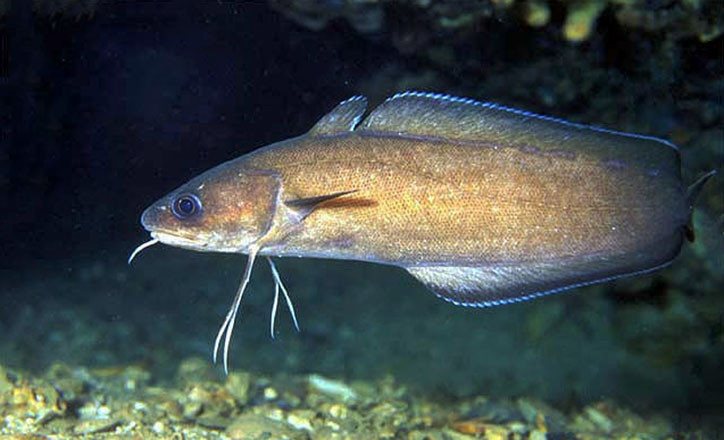Fish of the Phycis genus of the Phycidae (Phycid hakes) family of the Gadiformes order of the Paracanthopterygii superorder.

(Forkbeard. Photo © ronjenjehrvatska.com)
Forkbeard (Phycis phycis) was first described in 1766 by the Swedish naturalist Carl Linnaeus (1707-1778).
It inhabits the depths of 13-614 meters, usually 100-200 meters. It often swims near the rocky and sandy-muddy bottom, close to the rocks. It is active at night. It hides in the rocks in daytime. The maximum recorded length is 65 cm; specimens up to 25 cm long are more common. The maximum weight is 3.9 kg. It feeds on small-sized fish and various invertebrates.

(Forkbeard. Photo by © David Luquet. fishbase.org)
It is a permanent inhabitant of the Adriatic Sea.
Names of forkbeard (Phycis phycis) in other languages are as follows:
Pendëcfurku (Albanian), Πετροσαλούβαρδος (Petrasaloúlvardos) (Greek), Brótola de roca (Spanish), Musdea (Italian), Brauner Gabeldorsch (German), Widlak różowy (Polish), Abrótea-da-costa (Portuguese), Обыкновенный нитепёрый налим (Obyknovennyi nitepjoriy nalim) (Russian), Tabinja mrka, Tabinja mrkulja, Tabinja (Croatian, Serbian, Slovenian), Phycis de roche (French).